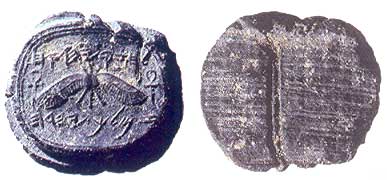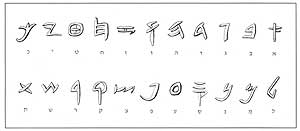The royal seal impression that I used as the basis for my April Fool’s Day post (ain’t Photoshop just amazing?!), is actually an impression of a bulla belonging to Hezekiah king of Judah. The bulla is part of the Kaufman collection and is published in Robert Deutsch, Biblical Period Hebrew Bullae. The Josef Chaim Kaufman Collection (Archaeological Center: Tel Aviv, 2003; Buy from Amazon.com). The image is reproduced with permission:

As can be seen from the image, the black clay bulla is in a very good state of preservation. It measures 13.2 x 11.9 x 3.8-1.9 mm, while the seal impression measures 11.9 x 9.9 mm. On the back of the bulla a papyrus imprint is clearly visible along with a groove left by the chord that tied the scroll. The seal was likely set in a bezel of a ring, as is clear from the groove around the edge of the seal impression.

The seal, as can be seen from the line tracing above, is dominated by a royal emblem, what Deutsch considers a two-winged sun disk. The inscription is found above and below the emblem and reads:
לחזקיהו ×?×—/×– מלך יהדה
[Belonging to] Hezekiah, [son of] Ahaz, King of Judah.
For those unfamiliar with the script, here is a key from Deutsch’s volume:

The provenance of the seal impression is unfortuantly unknown, though there is no good reason to doubt its authenticity. There are actually four royal bullae beloinging to Hezekiah, impressed by three different seals, in the Kaufman collection.

Nor is there any reason to believe in its authenticity. This unprovenanced item cannot be used either for historical or paleographical research.
Fair enough, Ed, especially for paleographical research. Historically, I’m not sure how much it could demonstrate, except for the “historicity” of Hezekiah, which I don’t think anyone really doubts (yet!). Of course, the winged sun disk is interesting and could lead to some speculation about its significance.
Fair enough that unprovenanced items have a chance of being “fake”, but surely the fact that many unproveneced items are genuine leeds one to conclude that information gained from scholarly study should not be prevented from publication. Maybe publication of scholarly articles should be headed with a subtitle stating that the item is unprovenenced and anyone who wishes to study further should take that into consideration. I really don’t think we should miss out on scholarly study because some “looter” has removed an item from situ.